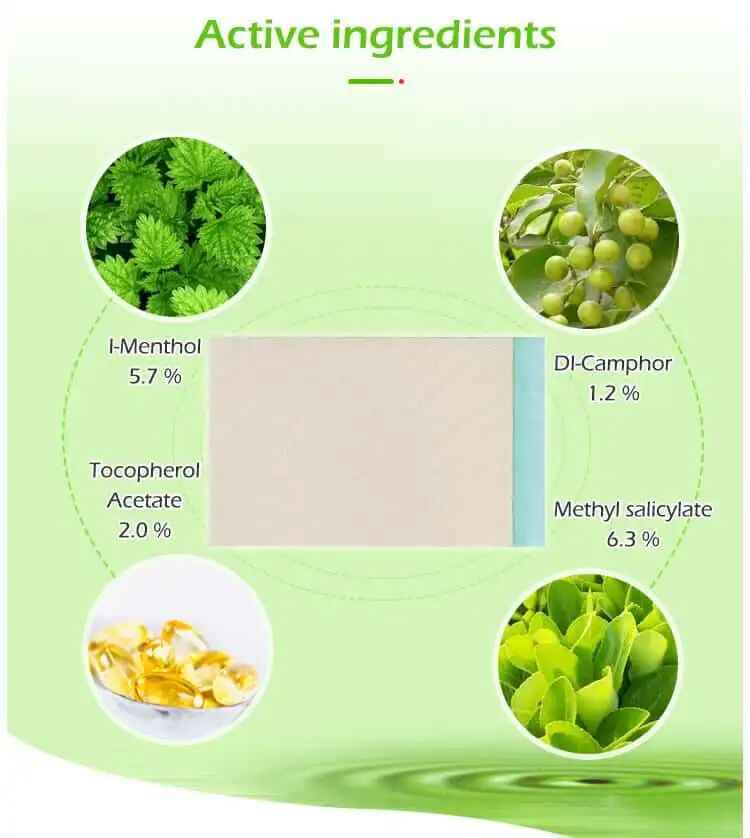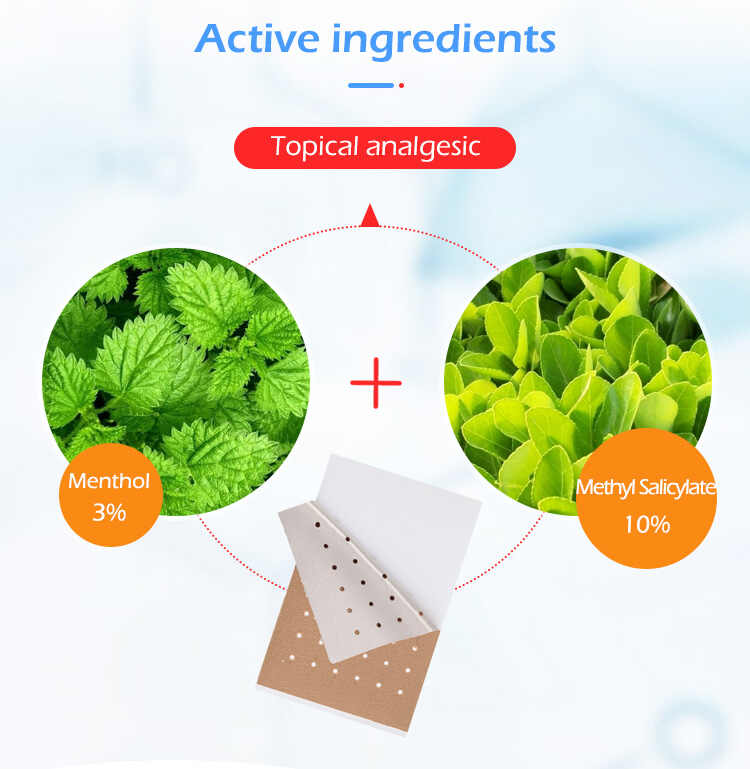What’s the Difference Between a Pain Relief Sticker OEM and a Supplier?
In the world of pain relief products, particularly Pain Relief Stickers, understanding the roles of various stakeholders in the supply chain is crucial for businesses looking to launch or enhance their product lines. Among these stakeholders, two key players often stand out: the Pain Relief Sticker OEM (Original Equipment Manufacturer) and the Pain Relief Sticker Supplier. While both play a pivotal role in the production and distribution of pain relief products, their functions and responsibilities differ significantly.
This article will explore the core differences between a Pain Relief Sticker OEM and a Pain Relief Sticker Supplier, providing clarity on which partner is most suitable depending on your business needs. Additionally, we will highlight how both parties can contribute to the development and distribution of custom pain relief stickers and private label pain relief stickers, and why understanding these distinctions is vital for your business’s success.

Defining the Roles of Pain Relief Sticker OEM and Supplier
What is a Pain Relief Sticker OEM?
An OEM (Original Equipment Manufacturer) refers to a company that designs and manufactures pain relief products, such as pain relief stickers, based on specific requirements provided by another company, often referred to as the brand owner. In the case of pain relief stickers, an OEM typically handles the following:
Product Development: The Pain Relief Sticker OEM is responsible for designing and formulating the product, including choosing the active ingredients (such as menthol, capsaicin, or other herbal components), the adhesive properties, and the packaging.
Customization: OEMs often work with businesses to create custom pain relief stickers that match the unique needs of the brand, including ingredient combinations, effectiveness, packaging design, and branding. For instance, they may offer private label pain relief stickers tailored to a company's logo and other branding elements.
Manufacturing: Once the design and formulation are finalized, the Pain Relief Sticker OEM manufactures the product in bulk, ensuring that it meets the necessary quality standards. This includes adhering to regulatory guidelines, conducting testing, and ensuring product consistency.
Innovation: Many OEMs are at the forefront of new technologies and innovations in pain relief, such as the development of transdermal systems that allow for better absorption of pain relief agents, or eco-friendly materials for packaging.
In summary, an OEM plays an essential role in the creation of a pain relief product from start to finish, especially when a company needs a tailored, unique product designed to meet specific market demands.
What is a Pain Relief Sticker Supplier?
A Pain Relief Sticker Supplier, on the other hand, typically serves as the intermediary between the manufacturer (often an OEM) and the end customers or distributors. The supplier handles the distribution, logistics, and sometimes the marketing of pain relief stickers to businesses, retailers, or other entities. A supplier’s role includes:
Product Distribution: The supplier sources pain relief stickers, often from a Pain Relief Sticker Manufacturer or OEM, and distributes them to retailers, wholesalers, or businesses. They often handle large-scale orders and ensure that products reach customers in a timely manner.
Inventory Management: Suppliers typically manage the inventory of pain relief stickers, ensuring that stock levels are adequate to meet demand. This includes warehousing the products and managing supply chains to prevent stockouts.
Sales and Customer Service: Pain Relief Sticker Suppliers often play a key role in customer service, providing businesses with information on available products, answering inquiries, and ensuring that clients have access to the products they need.
Bulk Orders and Pricing: Suppliers can handle large orders, often providing bulk pricing for businesses that need to stock up on custom pain relief stickers or private label pain relief stickers. They may also work with smaller businesses, offering tailored pricing packages based on volume.
In essence, a supplier is focused on the logistics and supply side of the business, ensuring that the pain relief stickers are available for purchase by businesses and end customers.
Key Differences Between Pain Relief Sticker OEM and Supplier
1. Role in Product Creation
OEM: Directly involved in the creation and design of the product. They may customize the product to meet specific client needs, such as creating a custom pain relief sticker with unique ingredients or branding.
Supplier: Primarily responsible for sourcing, stocking, and distributing existing products created by an OEM. Suppliers do not usually engage in product design or development.
2. Customization and Branding
OEM: Offers significant product customization options. For example, if a company wants a private label pain relief sticker, they can work with the OEM to create a unique formula, packaging, and design that reflects the brand's identity.
Supplier: Sells products, but may not have the flexibility to customize the actual product. Suppliers typically focus on delivering ready-made products, including private label pain relief stickers, but may not provide deep customization options.
3. Manufacturing and Production
OEM: Manages the manufacturing process. The Pain Relief Sticker OEM is responsible for ensuring that the product is made according to the specifications and meets safety and regulatory standards.
Supplier: Does not typically engage in manufacturing. Instead, they focus on distributing products that have already been manufactured by an OEM or Pain Relief Sticker Manufacturer.
4. Supply Chain and Distribution
OEM: May not always be directly involved in the final distribution of the product. Their primary function is manufacturing and sometimes branding, but they may sell directly to businesses or work with distributors.
Supplier: Focuses on the logistics and distribution of the product. Suppliers work with multiple manufacturers or OEMs to offer a range of products to customers, ensuring that pain relief stickers reach the market efficiently.
5. Innovation and R&D
OEM: Usually leads in research and development, often innovating with new formulations, packaging, and technologies. They are responsible for improving the product and staying ahead of market trends.
Supplier: Primarily focused on the business side of the product’s lifecycle. Suppliers may not engage in the development or innovation of the product but will source the latest products from OEMs to offer to their clients.
Choosing the Right Partner for Your Business
When deciding whether to work with a Pain Relief Sticker OEM or a Pain Relief Sticker Supplier, businesses need to assess their needs:
Work with an OEM if you need a customized, unique product with specific ingredients, formulation, and packaging. If you're launching a new brand or private label, an OEM can help bring your vision to life.
Work with a Supplier if you’re looking for ready-made products with reliable delivery and cost-effective bulk purchasing. Suppliers are ideal for businesses that want to focus on marketing and selling rather than product development.
Some businesses may choose to work with both. For example, they may partner with an OEM for product development and a supplier for distribution and inventory management.
Conclusion
Understanding the distinction between a Pain Relief Sticker OEM and a Pain Relief Sticker Supplier is crucial for businesses in the wellness, healthcare, or retail industries. Both entities play essential roles in the creation, customization, and distribution of pain relief products, but they serve different functions.
If your business requires a customized pain relief sticker product with specific ingredients or branding, working with a Pain Relief Sticker OEM will be your best bet. If, however, you need a reliable partner to handle bulk orders and distribution, a Pain Relief Sticker Supplier is the way to go.
By carefully choosing the right partners, businesses can ensure that they deliver high-quality, effective pain relief solutions to their customers while optimizing supply chain efficiency.
Frequently Asked Questions
Q1: What’s the main difference between a Pain Relief Sticker OEM and a Supplier?
A1: An OEM manufactures and customizes pain relief stickers, while a supplier distributes and sells the products made by OEMs.
Q2: Can I get custom pain relief stickers from a supplier?
A2: Typically, suppliers offer ready-made products, but you can work with them to source custom pain relief stickers made by an OEM.
Q3: Do I need to work with both a Pain Relief Sticker OEM and a Supplier?
A3: It depends on your business needs. If you want customization, work with an OEM. For distribution, you’ll need a supplier. Many businesses partner with both.
Q4: How can I ensure that my private label pain relief stickers are high quality?
A4: Work with a reputable Pain Relief Sticker Manufacturer or OEM that adheres to safety standards and provides thorough quality control testing.
Q5: Which partner is more cost-effective, an OEM or a supplier?
A5: OEMs typically offer lower prices for bulk orders of custom pain relief stickers, while suppliers may offer competitive pricing for ready-made products in various quantities.
By understanding these key differences, businesses can make informed decisions when selecting partners for pain relief product development and distribution.






